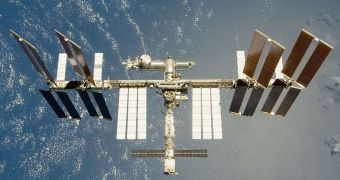Electrical shocks that each of us experience when touching doorknobs or car doors after a long trip are caused by vast numbers of electrons, which you have collected before touching the surface. The shock is not strong in itself, but it can be very frightening. However, when it appears during spacewalks, as astronauts attempt for example to grab a tool, or touch the outer walls of the International Space Station (ISS), it can be a serious problem, with disastrous consequences. A newly installed device now monitors the level of static electricity on the orbital lab, to prevent such incidents, Space reports.
Because the ISS travels at the upper limits of the atmosphere, it mostly moves through the ionosphere, a layer that is filled with ions, or electrically charged atoms. As it orbits the planet, the station too scraps off electrons from these atoms, which gather in static charges on its outer surfaces, and on cargo bay doors. Space scientists have tried for a long time to predict exactly what type of influence these electrons could have on spacewalkers or incoming ships, but their results have been inconclusive.
But one of the greatest problems associated with static charges is the fact that they can cause powerful arcs, if two nearby surfaces exhibit large differences of potential. These arcs can literally damage the thermal coatings on the ISS, and harm astronauts extensively, if they are out of the station at the time. Recently, experts at the Utah State University (USU) in Logan, Utah, have developed a new instrument to measure these charges, called a Floating Potential Measurement Unit (FPMU), which has been successfully tested.
At this point, the ISS is still too small for an electrical arc to form, experts say, but as assembly continues, the football field-sized construct will become even bigger. In its final configuration, statical electricity will become a genuine problem, and crew members need to be ready for it. According to the team that developed the new measuring unit, the FPMU could also be used by physicists to provide “in-situ” measurements of the electricity in the ionosphere.

 14 DAY TRIAL //
14 DAY TRIAL //